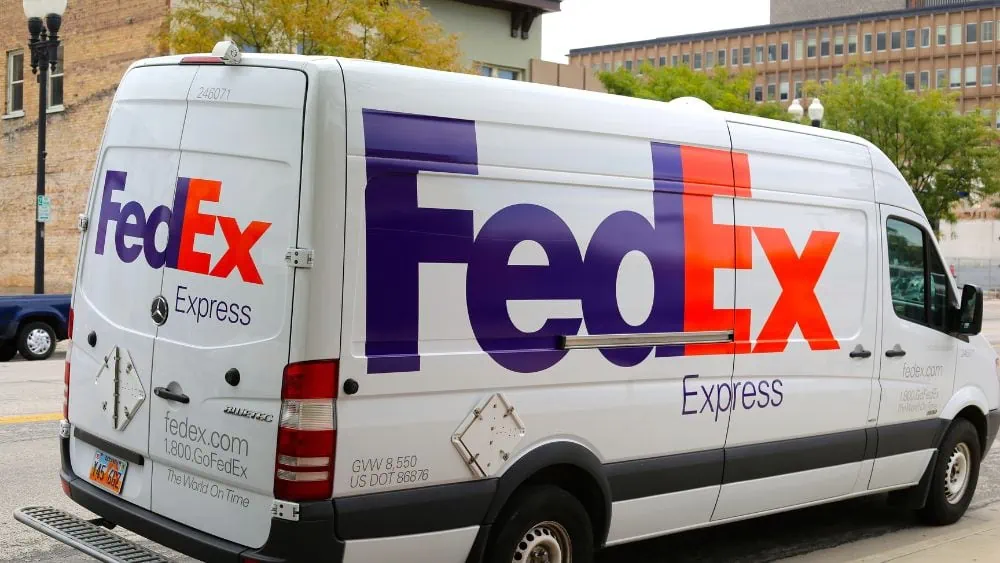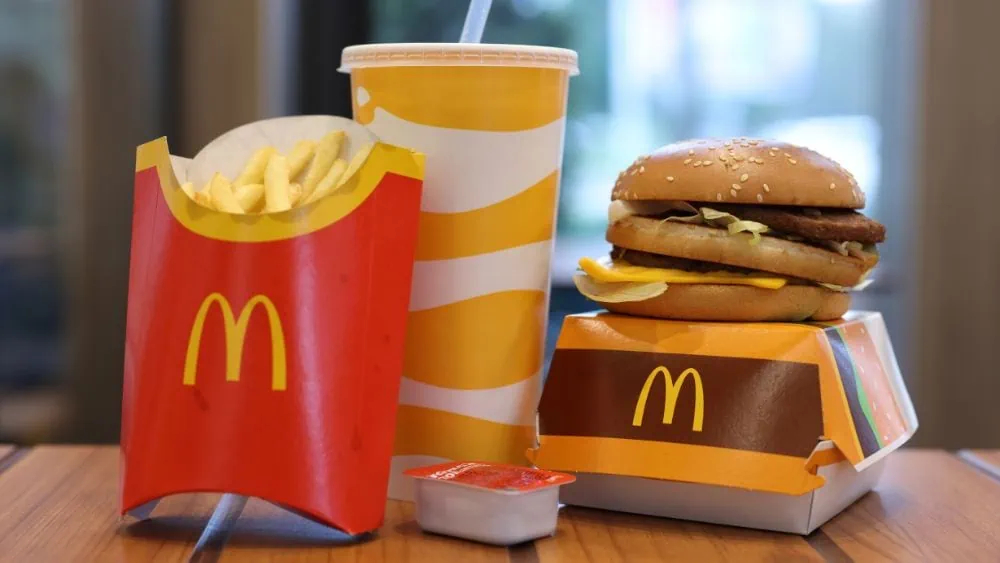What exactly are subliminal messages?
These are like the quiet movers and shakers of the advertising world, operating just beyond the threshold of our conscious awareness.
Imagine a whisper so soft that your conscious mind might miss it, but your subconscious is all ears, taking notes for your next shopping trip.
Subliminal messages, in their most basic form, are signals or messages embedded within other mediums, designed to pass below the normal limits of perception.
Subliminal advertising refers to having a hidden message in the form of visual or auditory stimuli within advertising campaigns. This can be through a digital marketing strategy or print advertising.
These messages are meant to nudge your thoughts, feelings, or actions without creating a big splash on the surface of your conscious mind.
So, think of it as planting a seed in a garden; you might not see what’s happening underground, but with a bit of time, something blooms—that’s the subtle power of subliminality in play.
Whether it’s a fleeting frame in a video that your eyes barely register, a whispered word in a jingle, or a shape cleverly integrated into a logo, these messages are the ninjas of the marketing world.
Their mission? To shape your preferences and, ultimately, influence your buying behavior, all without setting off any alarms in the more rational corners of your brain.
It’s a crafty strategy with a simple goal: communicate directly to your subconscious, because when it comes to decision-making, that’s where the real magic happens.
Hidden Hints within Subliminal Advertising
Now, let’s uncover the different kinds of covert cues companies craft to catch our attention. Within the realm of marketing, there’s a ton of hidden hints nestled in ads, each with its unique beckon to our subconscious.
There are many different ways a marketing team can use subliminal advertising and hidden persuaders.
Varieties of Subliminal Marketing Techniques
Visual Cues
Visual cues are the silent charmers of the advertising world. Advertisers may utilize colors or designs that subconsciously signify particular emotions or qualities, like the serene blue that whispers reliability or a bold red that shouts excitement.
You may not at first be consciously aware of specific colors in a company’s logo but a few subtle details with the color scheme may change your perception of the image.
Subtle Details in Language
Subtle language tricks are masters of disguise in plain text. A snappy slogan or an alluring alliteration can stick in our minds long after we’ve read them, working their magic without fanfare.
Subaudible Suggestions
Subaudible suggestions sit on the fringe of our hearing. From a faint whisper in a jingle to a sound effect expertly blended into the background, these sounds can influence our mood and reactions, nudging us toward a specific response.
Space & Shapes
The use of space and shapes might play a psychological game. Ever noticed how sometimes a seemingly abstract formation in an ad stealthily outlines a familiar symbol? It’s not a coincidence; it’s a calculated move to link the product with a certain idea or feeling.
Sensory Cues
Sensory cues – scents and textures included – are the hidden handshake between product and consumer. These can evoke memories or feelings, like the smell of fresh rain on a car might bring out a sense of newness and purity.
How Subliminal Advertising uses Combinations
And then, there are the combo moves. Seasoned advertisers will mix and match these elements, crafting a layered approach that can be far more potent than any single subliminal message.
A picture might not just paint a thousand words but could also resonate with a melody that takes you back to a cherished memory, all while a cleverly placed phrase in the corner stirs a sense of urgency.
In essence, the ads we encounter are often more than meets the eye, or ear, or even the nose.
It’s a dance of subtleties and hints, all choreographed to lead us towards one action – to consider, to desire, and perhaps, to purchase.
As we inch closer to understanding these marketing maneuvers, we become better equipped to appreciate the ingenuity behind the ads and make more informed decisions as consumers.
The Power of Pictures: Visual Tricks on the Subconscious Mind
Have you ever caught yourself gazing at an ad, feeling an inexplicable draw towards it, but you weren’t quite sure why?
You’re likely encountering the subtle tug of visual subliminality, a very clever strategy that advertisers employ to communicate with your subconscious.
Picture this: An ad for a bottle of refreshing coca cola. It’s just a cool drink, right? But look closer. Notice the way the ice cubes seem to sparkle with vivacity, how they’re shaped almost like happy faces.
Or perhaps the mist on the bottle is map-shaped, subconsciously drawing you to the idea of global refreshment. These aren’t happy accidents; they’re intentional designs aimed at evoking specific emotions and associations within us.
Imagery in ads can manipulate lighting, colors, and even spatial relations between objects to convey a message.
A travel agency might use a bright, sun-kissed beach image with a family laughing in the foreground.
The message is clear without saying a word: “You could be this happy if you book a vacation with us.”
Sometimes, the visual trickery is even more cryptic.
Ever encounter an advertisement that used shapes or shadows in the background that formed a secondary image?
A classic example is a liquor ad with ice cubes in a glass, subtly hinting at a skull—this could suggest a ‘hidden’ potency or risk associated with the beverage, which for some may make it all the more enticing.
It’s a well-orchestrated dance of color contrasts, clever compositions, and symbolic elements that craft a narrative beyond the direct sell.
These images invite us into a story, persuading us at a sensory level that is often beyond the reach of our conscious guard.
While words in an ad communicate directly, images whisper to us in a language we feel rather than hear.
These visual tricks can shape our perceptions, play on our desires, and quietly nudge us towards a brand or product.
As consumers, it’s important to keep our eyes wide open – to the obvious delights of the ad’s imagery, and to the less obvious stories they are unfolding within our minds.
Just remember, the true power of a picture may lie in what it suggests, not just in what it shows.
Effective Subliminal Advertising in Sounds
Music and sound effects (SFX) have this uncanny ability to nudge our thoughts and feelings in certain directions, often without the faintest flicker of awareness on our part.
Now, you might think to yourself, “How influential can a simple jingle really be?”
Quite influential, as it turns out.
Our brains are wired to respond to sound—and not just any sound, but the right kind of harmony or beep that might just make us feel more at ease, more excited, or even more inclined to make a purchase.
Let’s examine the ways in which these auditory elements can be clever companions to a marketer’s message:
Tunes That Stick
Ever had a commercial jingle stuck in your head? It’s no accident. Those catchy tunes are designed to keep the product humming in your subconscious long after the ad has ended.
Sounds That Stir Emotion
Imagine the sound of a soda can opening, that fizz and pop. Did you feel a little thirsty just now? Sounds can evoke emotional responses that are then subtly associated with a brand or product.
Whispers of Nostalgia
Some sounds transport us back in time, don’t they? The soundtracks that echo the tunes of yesterday can make us associate the warmth of nostalgia with the advertised product.
Frequency that Feels Right
Some companies use specific frequencies in their sound design — frequencies that many of us find inherently pleasing. It’s not magic, it’s science—and it’s used to tune into our buying impulses.
Silence Speaks Volumes
Sometimes, it’s the absence of sound that catches our ear. A sudden moment of silence can be just as impactful, emphasizing a message or product feature that the advertiser wants you to notice.
The fascinating bit here is that even when we think we’re just tapping our feet to a cool beat, our brains might be processing so much more—a subliminal shopping list that we didn’t even know we had.
So, the next time you find yourself suddenly wanting to buy that snack after hearing the rustling of a bag in a commercial or feeling a sense of urgency during an ad with a ticking clock, you’ll know that those ‘sneaky sounds’ are hard at work.
Subliminal Messaging Tactics with Words
As we sail into the heart of our discussion, it’s time to cast our gaze on the power of language, the very essence of communication in advertising.
We’re not simply talking about the straightforward “Buy me!” appeals. Oh no, we’re peeling back the layers to reveal the subtle, yet potent, influence of words and phrases in steering our thoughts and preferences.
This is where the art of suggestion swings into action.
You see, words are like the strings of a puppet master in the world of advertising. They can be as direct as a handshake or as nuanced as a painter’s brushstroke. Here’s how:
Double Entendre
Some phrases have that magical ability to convey more than one meaning at the same light-hearted wink. Double entendres can plant seeds in consumers’ minds, sparking curiosity and interest without them even realizing it.
Emotive Language
Advertisers often pick words that pack an emotional punch. These are the words that resonate with us, stirring feelings of excitement, comfort, or nostalgia that linger long after the message has been delivered.
Strategic Repetition
Ever noticed how certain ads repeat a phrase until it’s drumming in your head? That’s not by accident. Strategic repetition makes certain phrases catchy and memorable, keeping the product in your thoughts.
Persuasive Techniques
These are the literary tools that can turn a simple statement into a siren song. From the compelling draw of rhetorical questions to the authoritative air of imperatives, such techniques can nudge us towards a purchase with remarkable efficiency.
Slogans and Catchphrases
The powerhouses of ad language, these are designed to be the earworms of the marketing world. Think of them as the phrases that stick like glue, often becoming part of the cultural fabric.
The way we’re wired, language can tickle our brains in mysterious ways. Sometimes, it’s not just about the product being presented but about how it’s presented. Words spark images, evoke emotions, and ultimately, without our express permission, can lead us to make a beeline for the checkout, with just the mere whisper of something as simple as “Limited Edition” or “Just Do It.”
That’s the hallmark of masterful advertising – using language not just to inform, but to tempt and tantalize, crafting an intricate dance of words that lures us into the commercial embrace. As we delve deeper into the intricacies of advertising, let’s keep our eyes wide open to the subtle, yet powerful, role that language plays in shaping our shopping desires.
The Science Behind Hidden Messages and Subliminal Ads
Do these messages really work?
What’s the verdict according to science?
The medium between an unnoticeable nudge and a conscious decision is where subliminal messages aim to reside. Intriguing, right? Here’s where it gets good. Experts have dabbled in a sea of research to uncover if that unassuming image or that oh-so-subtle phrase actually leads us to reach for our wallets.
First off, the human brain, a marvel in its own right, is wired to pick up on cues without us consciously flagging them.
This implies that, yes, certain stimuli that slip under the radar might influence our choices. Imagine walking into a store and feeling inexplicably drawn to a product.
You might not realize that the product appeared in a TV show you watched, cozily nestled in the background—a concept known in marketing as product placement.
However, it’s essential to keep our feet on the ground and recognize—that while the subconscious is powerful—it isn’t a genie’s lamp. It can’t be rubbed to grant marketers their every wish.
The effectiveness of subliminal messaging is debated. Some studies suggest that while there can be a subtle effect, it’s usually fleeting and not strong enough to drive behavior in a significant way.
And yet, there’s a fascination with exploring just how far we can go before a message tips from the subconscious into the spotlight of our awareness.
Certain scenarios, like placing a product in a themed TV show or a song with carefully crafted lyrics, can create a favorable association and perhaps nudge us toward choosing one brand over another.
To cap it off, the scientific community lands on a spectrum of conclusions ranging from ‘moderately influential’ to ‘not the magic bullet’.
Consumer behavior is a dance of many factors, with subliminal messaging being just one partner in the tango. Perhaps the biggest takeaway is that savvy consumers and marketers alike should remain aware of these subtle techniques—not out of fear, but from a place of informed curiosity.
In a nutshell, the jury might still be deliberating in the court of science with subliminal advertising.
That doesn’t mean we should close the case on subliminal messages just yet—they’re an enigma that continues to spark both skeptical eyebrows and keen interest and the conscious perception is a powerful tool for a solid marketing strategy.
Examples in Subliminal Advertising
Subliminal advertising, a strategy designed to influence consumers’ minds and behavior below the threshold of conscious awareness, has been both celebrated and criticized for its subtlety and effectiveness. Here are some intriguing subliminal advertisement examples of how brands have incorporated subliminal messages into their advertising, logos, and products, sparking fascination and debate.
FedEx Logo
At first glance, the FedEx logo appears straightforward, featuring the brand’s name in bold, block letters. However, a closer inspection reveals a cleverly hidden arrow between the ‘E’ and ‘x’ in ‘Ex,’ symbolizing speed, precision, and forward direction. This subliminal message reinforces FedEx’s commitment to quick and reliable delivery, subtly influencing consumers’ perceptions of the brand without their conscious realization.
Coca-Cola
Coca-Cola has been subject to one of the most famous allegations of subliminal advertising.
In a campaign, people claimed to see hidden images within the ice cubes of a Coke advertisement. While the company has denied these claims, it showcases how consumers are keenly aware and often speculative of potential subliminal messages in advertising, demonstrating the power of suggestion and the importance of scrutinizing every detail in marketing materials.
McDonald’s Logo
The McDonald’s logo, with its iconic golden arches, is said to carry subliminal significance beyond its resemblance to the letter ‘M.’ Psychologist Louis Cheskin suggested in the 1960s that the arches subconsciously represent nourishment and a pair of nurturing breasts, according to Freudian psychology.
This interpretation of one of the most recognized logos aims to evoke feelings of comfort and satisfaction, encouraging consumers to associate McDonald’s food with these positive emotional responses.
Pirates of the Caribbean
Subliminal messaging isn’t exclusive to static images; it extends to films and multimedia. In the “Pirates of the Caribbean” movie series, subtle references and imagery are woven into the narrative and visuals to enhance the adventurous and mystical appeal of the story. From hidden Mickey Mouse silhouettes to cryptic symbols and messages, these easter eggs serve to deepen fans’ engagement with the film through the thrill of discovery.
Toblerone Logo
The Toblerone logo, which depicts a mountain, contains a hidden image of a bear standing on its hind legs. The bear is not only a symbol of the city of Bern, Switzerland, where Toblerone originated, but also signifies the strength and quality of the chocolate. This subtle inclusion adds a layer of meaning to the chocolate company logo, connecting the brand to its heritage and symbolizing the ruggedness and purity of the Swiss Alps.
These examples of subliminal advertising reveal the ingenious ways in which marketers endeavor to connect with consumers on a deeper, often unconscious level. Whether through logos, film, or other mediums, the goal remains the same: to influence perceptions and behaviors subtly, embedding brands into the fabric of consumers’ lives.
Is Subliminal Messaging Ethical?
The ethics of subliminal messaging in advertising is a topic of ongoing debate. Critics argue that subliminal advertising manipulates consumers’ choices without their consent or awareness, raising significant concerns about autonomy and manipulation. They contend that influencing purchasing decisions or perceptions subconsciously undermines the principle of informed choice, a cornerstone of ethical marketing.
Proponents, however, suggest that subliminal messages are part of the broader spectrum of creative advertising strategies designed to engage and entertain. They argue that such techniques can enhance consumer experiences and brand engagement without causing harm or deception, provided they are used responsibly and do not exploit vulnerable audiences.
It can be a dangerous practice. The Federal Communications Commission held hearings to declare subliminal advertising as “contrary to the public interest” because it involves a form of deception.
Ultimately, the ethicality of subliminal messaging hinges on intent, transparency, and the potential impact on consumers. Ethical advertising practices should prioritize respect for the consumer’s autonomy and conscious decision-making, ensuring that subliminal techniques, if used, are neither deceptive nor manipulative.










0 Comments